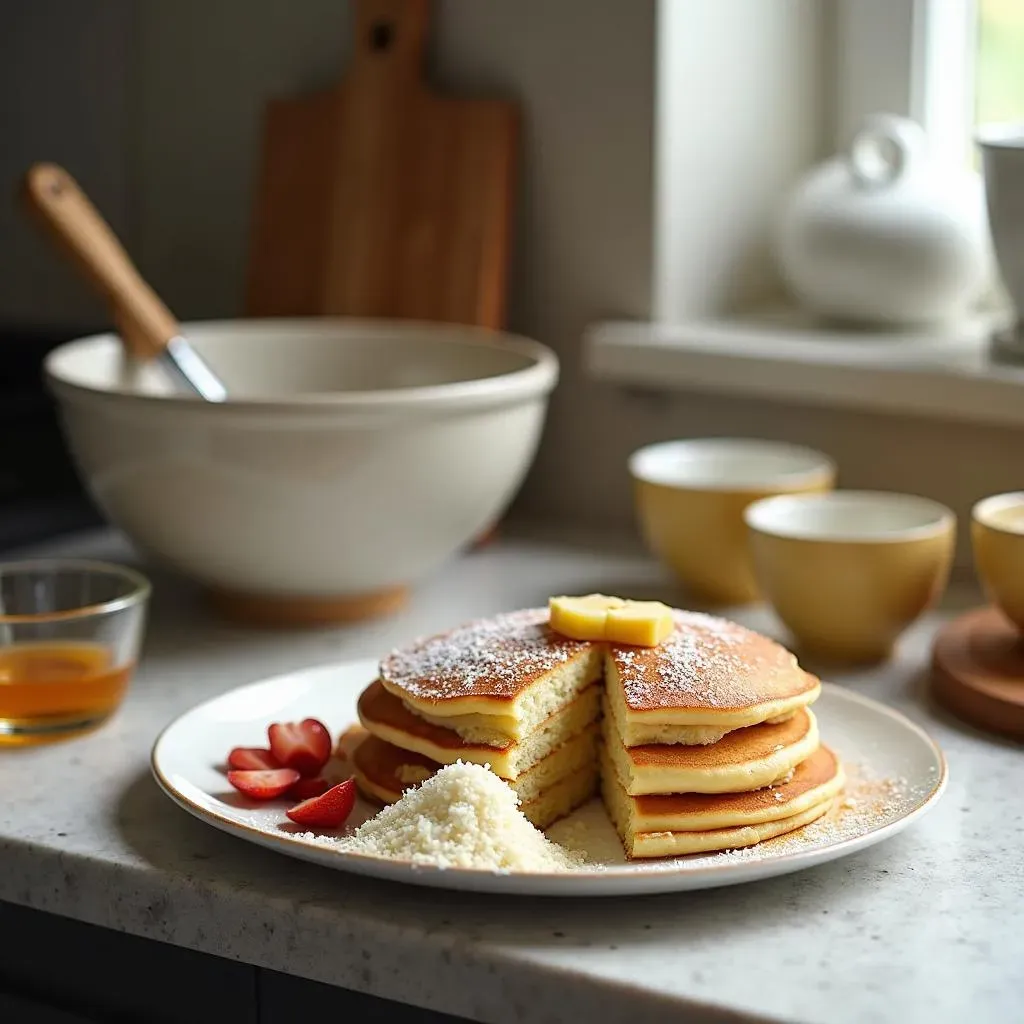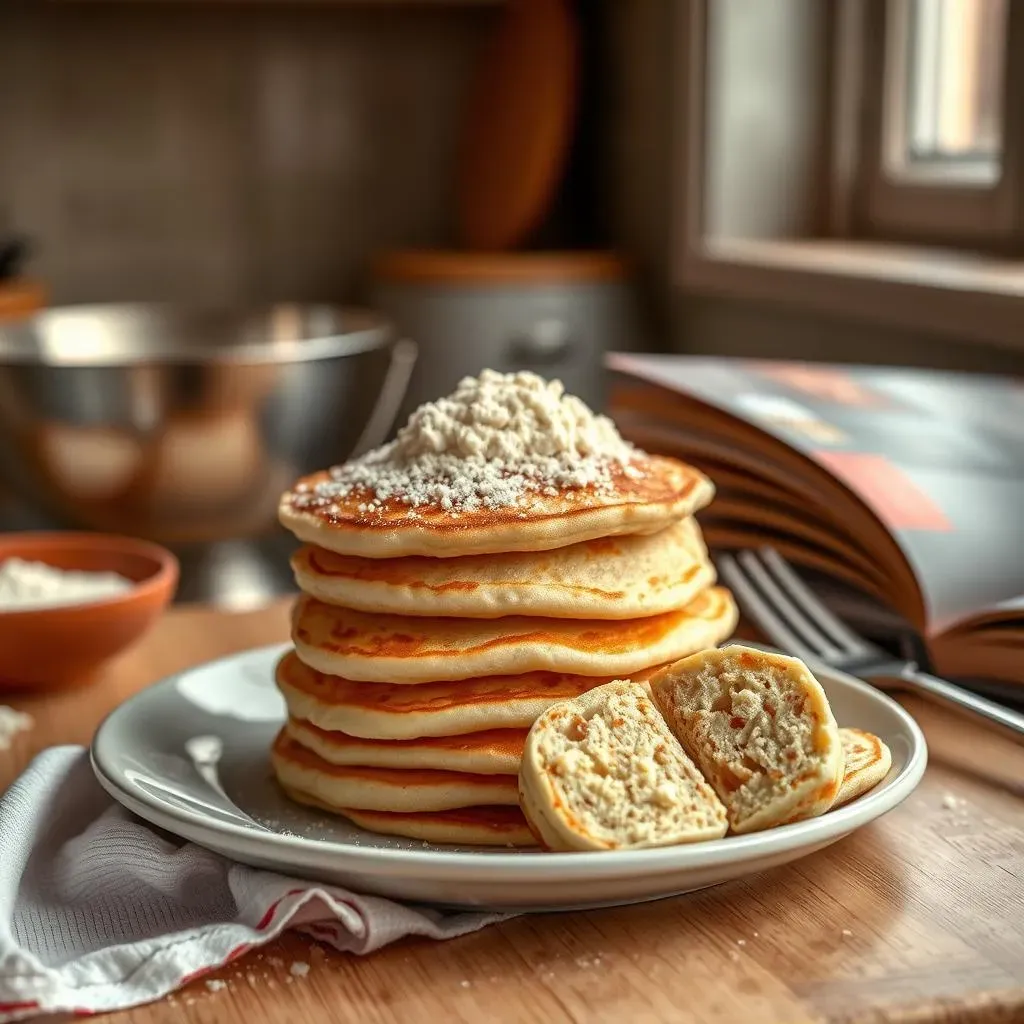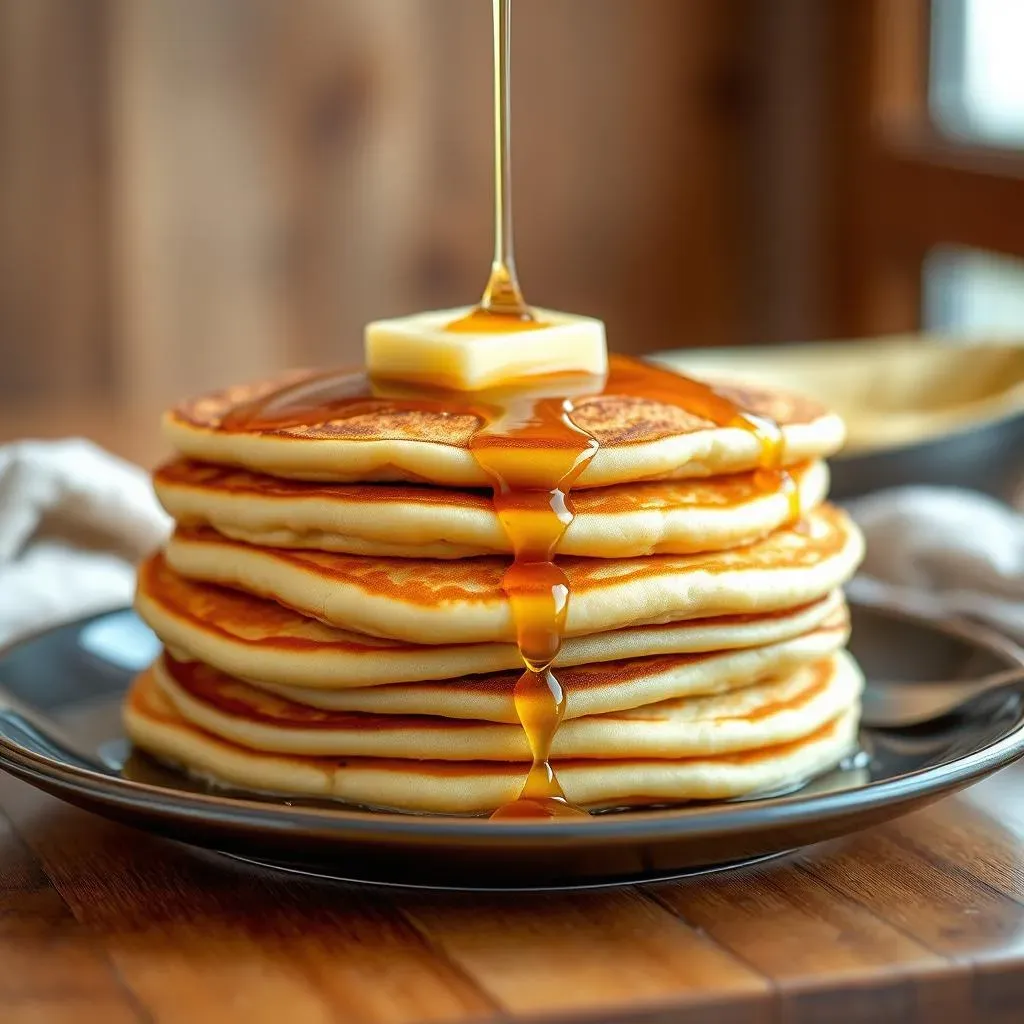Table of Contents
So, you've bravely ventured into the world of gluten-free baking, armed with a recipe and a hopeful heart. But instead of fluffy, golden pancakes, you're staring at a stack of gummy, disappointing discs. Don't despair! You're not alone. Many gluten-free bakers face the frustrating question: "Why are my gluten-free pancakes gummy?" This article is your guide to conquering this common gluten-free baking challenge. We'll unravel the science behind why gluten-free pancakes sometimes go wrong, exploring the common pitfalls that lead to that dreaded gummy texture. We'll then equip you with the knowledge and practical tips to troubleshoot your recipe and finally achieve the light and fluffy gluten-free pancakes of your dreams. Get ready to master the art of gluten-free pancake perfection! We'll cover everything from the right flour blend to the ideal cooking temperature, ensuring you'll never again face the gummy pancake predicament. Let’s flip the script on those gummy pancakes and make some seriously delicious breakfast!
The Science of GlutenFree Baking: Why It's Tricky

The Science of GlutenFree Baking: Why It's Tricky
Gluten's Role in Traditional Baking
Let's talk about gluten, the protein found in wheat, barley, and rye. It's the unsung hero of traditional baking, creating that wonderfully chewy texture we all know and love. Gluten forms a network of stretchy strands when mixed with water, giving bread its structure and pancakes their fluffy lift. When we remove gluten, as we do in gluten-free baking, we lose that crucial structural support. This is why gluten-free baking can be a bit of a challenge; we need to find alternative ways to achieve that same lift and texture.
Think of gluten as the scaffolding of a building. Without it, the structure is weak and prone to collapse. In gluten-free baking, we're essentially building the same structure without the scaffolding, requiring careful planning and the right materials. That's where things get interesting. A good gluten-free flour blend will often include starches like cornstarch or tapioca starch, which add bulk and some structure but lack the elasticity of gluten. This is why experimentation is key. Find a blend that works for you! Check out our gluten-free pancake mix comparison for some ideas.
The Importance of Starches and Binding Agents
The starches in gluten-free flour blends play a crucial role in creating texture and structure. However, unlike gluten, they don't create a stretchy network. This is where binding agents come into play. Ingredients like xanthan gum or guar gum act as glue, helping to bind the ingredients together and prevent a gummy or crumbly texture. They mimic some of the properties of gluten, giving the batter the necessary cohesion to create a decent pancake.
But even with binding agents, the balance is delicate. Too much, and your pancakes will become gummy. Too little, and they'll fall apart. It's a bit like Goldilocks and the Three Bears—we need to find just the right amount! This is where understanding your specific flour blend is crucial. Some blends already contain xanthan gum, so adding more could be a mistake. For more information, explore our recipe without xanthan gum for a different approach.
- Experiment with different gluten-free flour blends.
- Carefully follow the instructions on your chosen blend.
- Don't be afraid to adjust the amount of binding agent.
Moisture and Cooking Temperature
Moisture content is another critical factor in gluten-free baking. Too much liquid, and your pancakes will be dense and gummy. Too little, and they'll be dry and crumbly. This is often overlooked, but getting the right balance is essential for success. The type of liquid also matters. Some liquids, such as milk, can contribute to a more tender crumb, while others may lead to a denser texture.
Cooking temperature is equally important. Gluten-free pancakes often need a lower cooking temperature than their gluten-containing counterparts. High heat can cause the outside to cook too quickly before the inside is fully set, resulting in a gummy center. This is why it's important to cook gluten-free pancakes over medium-low heat, allowing them to cook thoroughly without burning. A good tip is to use a slightly lower temperature than what the recipe suggests. For inspiration, explore our tips for perfect gluten-free pancakes.
Ingredient | Effect on Texture |
|---|---|
Too much liquid | Gummy, dense pancakes |
Too little liquid | Dry, crumbly pancakes |
High heat | Burnt outside, gummy inside |
Low heat | Evenly cooked, fluffy pancakes |
Common Culprits: Identifying the Gummy GlutenFree Pancake Issues

Common Culprits: Identifying the Gummy GlutenFree Pancake Issues
Flour Power (or Lack Thereof)
Let's face it: gluten-free flour blends can be a bit of a wild card. They're often a mix of different starches and flours, and the ratios can dramatically affect your pancake's texture. Too much starch, and you're heading straight for gummy town. Think of it like this: starch absorbs a lot of liquid, making the batter heavy and dense. If your pancake recipe relies on a blend heavy on starches, like tapioca or potato starch, you might need to adjust the liquid accordingly or opt for a blend with a higher proportion of gluten-free flour, like almond or oat flour. Experimenting with different blends is key to discovering what works best for you. For some inspiration, check out our gluten-free pancake mix comparison to see some options.
Another common issue is using a blend that's not designed for pancakes specifically. Some blends work great for cakes or breads, but their texture isn't suitable for the lighter, fluffier texture of pancakes. They might contain ingredients that hold onto moisture too tightly, resulting in a dense or gummy final product. Look for blends specifically labelled for pancakes or experiment with single flours, like the ones mentioned in our oat flour pancake recipe or our almond flour pancake recipe to see if you can achieve better results.
- Experiment with different gluten-free flour blends.
- Read reviews before purchasing a new blend.
- Consider using a blend specifically for pancakes.
The Binding Agent Blunder
Xanthan gum and guar gum are the superheroes of gluten-free baking, acting as binding agents to help create structure where gluten would normally be. They're amazing, but too much of a good thing can be disastrous. Overusing these binding agents can lead to a gummy texture. It's like adding too much glue to a craft project; everything sticks together too much, making it dense and inflexible. The key here is to follow the recipe carefully and consider the binding agent already present in your flour blend. Many blends already contain xanthan gum, so adding more might be redundant and even counterproductive. If you're using a blend without added gums, start with a small amount and add more gradually until you achieve the desired consistency. For a gum-free approach, try our recipe without xanthan gum.
Alternatively, underusing binding agents can also lead to crumbly or falling-apart pancakes. If your pancakes are too dry and lack cohesion, you might need to add more binding agent. But remember, start small and gradually add more until you reach the right consistency. It's a delicate dance, and finding the right balance takes practice. Don't give up! You can do this. For more troubleshooting tips, check out our common gluten-free pancake mistakes to learn what to avoid.
Binding Agent | Too Much | Too Little |
|---|---|---|
Xanthan Gum | Gummy, tough pancakes | Crumbly, falling-apart pancakes |
Guar Gum | Gummy, tough pancakes | Crumbly, falling-apart pancakes |
Tips and Tricks for Fluffy GlutenFree Pancakes: Recipes and Solutions

Tips and Tricks for Fluffy GlutenFree Pancakes: Recipes and Solutions
Mastering the Mix: Flour Power
Let's talk about flour blends! Finding the right one is like finding the perfect pair of jeans – it takes some trial and error. Experiment with different blends to see what works best for you. Some blends are specifically designed for pancakes, while others might be better suited for cakes or breads. Don’t be afraid to mix and match! For example, you could try combining almond flour with tapioca starch for a unique texture. Or, if you're feeling adventurous, check out our coconut flour pancake recipe for a delicious twist. Remember, the goal is to find a balance of starches and flours that create a light and fluffy batter, not a gummy mess.
Another important tip is to measure your flour accurately. Gluten-free flours can be denser than traditional wheat flour, so using a kitchen scale for precise measurements is highly recommended. This ensures you're adding the correct amount of flour to the batter, which directly impacts the final texture. Using a measuring cup can lead to inaccuracies, which can result in gummy pancakes. For a simple recipe perfect for beginners, see our easy gluten-free pancake recipe.
- Use a kitchen scale for precise flour measurements.
- Experiment with different gluten-free flour blends.
- Consider using a blend specifically designed for pancakes.
Cooking Techniques for Success
The cooking process is just as important as the batter itself! High heat is the enemy of fluffy pancakes. It can cause the outside to cook too quickly, trapping moisture inside and creating that gummy texture. Instead, cook your pancakes over medium-low heat. This allows the batter to cook evenly from the inside out, resulting in a light and fluffy pancake. Patience is key here. It might take a little longer, but the result will be worth it!
Another helpful tip is to not overcrowd the pan. Give each pancake enough space to cook properly. Overcrowding can lower the pan's temperature, leading to uneven cooking and gummy pancakes. Cook a few pancakes at a time, ensuring even browning and a fluffy interior. For more tips and tricks, check out our tips for making perfect gluten-free pancakes. If you’re looking for a recipe perfect for a small batch, try our gluten-free pancake recipe for one.
Mistake | Solution |
|---|---|
High heat | Cook over medium-low heat |
Overcrowded pan | Cook a few pancakes at a time |
Inaccurate measurements | Use a kitchen scale |